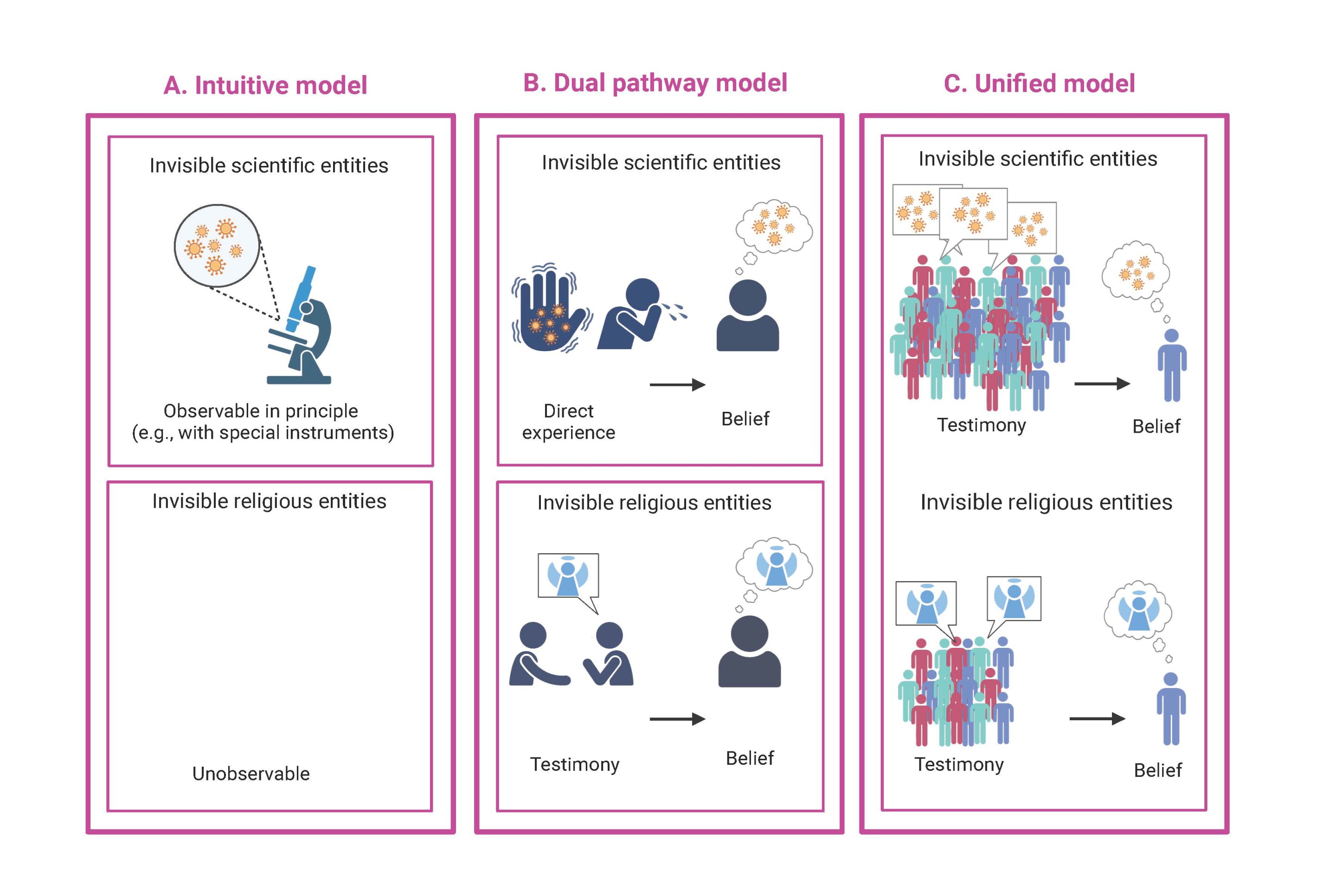The study highlights the decisive role of testimony in forming our beliefs and understanding of the world, contrary to the notion that direct experience is the main driver of scientific belief.
For example, it finds that people believe in germs because doctors and scientists tell us they exist, even though we cannot see them with our own eyes. Likewise, we infer that people get sick because of germs by learning this causal relation from others rather than discovering this connection through personal observation.
In the research, by reviewing empirical evidence in the past few decades, the team proposed a theoretical model that explains how people come to believe in the existence of invisible entities, such as germs in science or God in religion.
It shows that people’s confidence in these phenomena is not because they have seen them directly but because they trust the sources that tell them about them.
Unlike previous models that proposed separate pathways for belief formation in science and religion, this model provides a unified explanation. It argues that others’ testimony, rather than direct experience, predominantly shapes beliefs in both domains.


